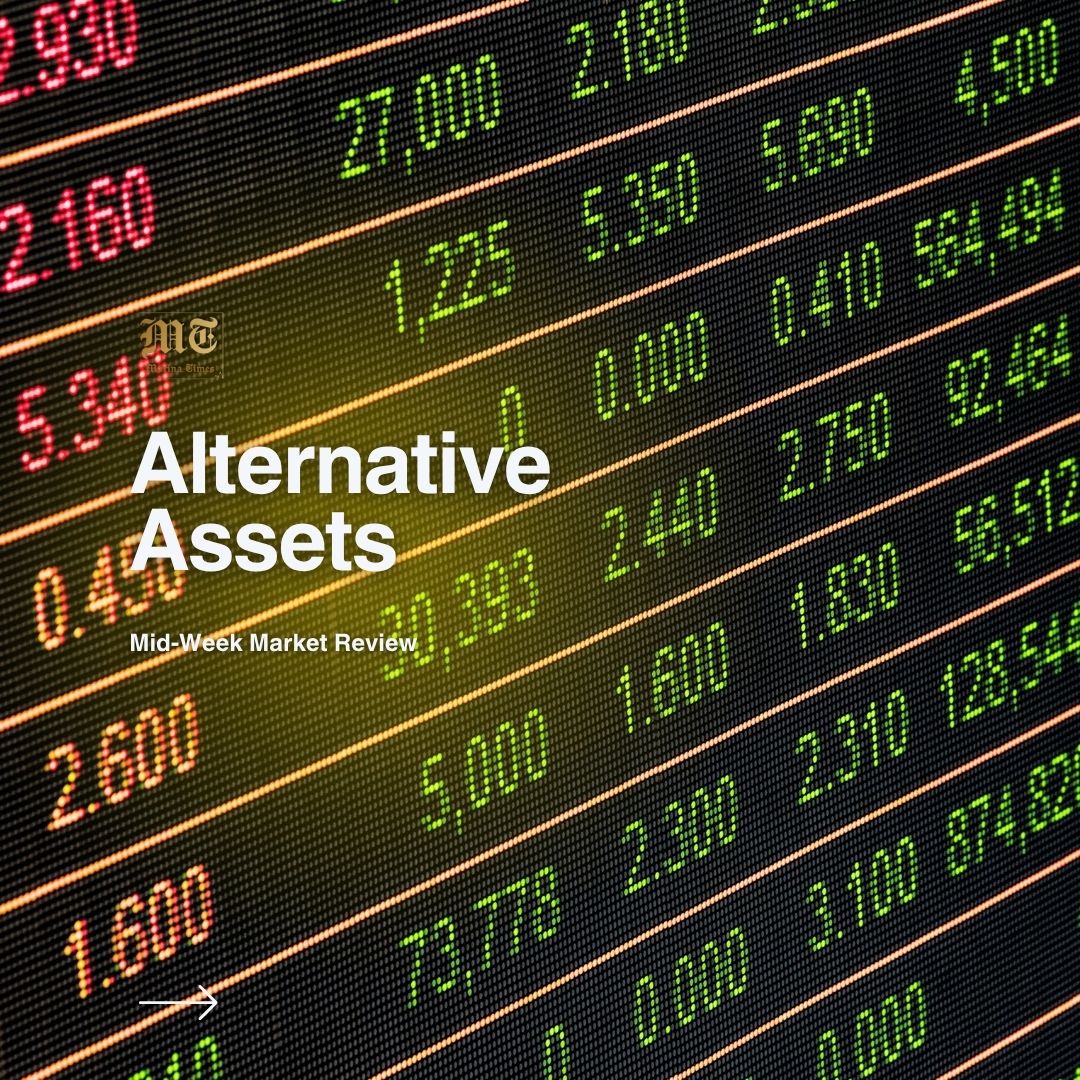
The global cryptocurrency landscape has undergone a dramatic and transformative week from July 9 to July 16, 2025. Marked by explosive market gains, unprecedented institutional participation, sweeping liquidations, and regulatory developments from nearly every continent.
Massive Price Surge and Liquidations
Bitcoin, the world’s leading cryptocurrency, broke multiple records this past week. On July 9, it climbed to an all-time high of $112,000, fueled by institutional inflows and mounting investor confidence. The momentum continued uninterrupted, with Bitcoin pushing through $118,000 by July 11, $119,000 by July 13, and peaking at $123,000 on July 14. This historic surge of more than 10% in under a week, triggered over $500 million in short position liquidations within a span of just five hours. In one particularly volatile hour, $205 million in leveraged short trades were wiped out, as bearish speculators were caught off-guard by the aggressive bullish rally.
Ethereum also had a standout performance. On July 10, it crossed $2,900, and by July 11, surpassed the psychological barrier of $3,000, cementing its dominance as the leading smart contract platform. Other major altcoins, including Solana and Avalanche, saw healthy single-digit growth in parallel with Ethereum’s momentum, contributing to a broad-based market rally.
The surge in prices was not simply technical but fundamentally driven. Spot Bitcoin ETFs continued attracting billions in institutional capital, with hedge funds, banks, and pension funds increasing their exposure to crypto as an asset class. Bitcoin’s reduced volatility and maturing market dynamics drew comparisons to gold, but with far greater upside potential.
Institutional Adoption Accelerates
A seismic shift in institutional behaviour marked a defining feature of the week. A globally systemically important European bank officially launched spot trading services for Bitcoin and Ethereum, becoming the first of its kind to offer such services to institutional clients in the United Kingdom. This move followed months of preparation and regulatory consultation, is expected to set a precedent for other global banks.
Meanwhile, a leading American multinational bank, long known for its criticism of digital currencies, made headlines by announcing its entry into the stablecoin arena. The bank’s CEO publicly stated that the time was right to support blockchain-based financial products, acknowledging that stablecoins could play a legitimate role in cross-border payments and treasury services. This marked a stark departure from the bank’s historically skeptical stance and is being viewed as a milestone in traditional finance’s full-scale entry into crypto.
A former top executive at one of the world’s major investment banks further commented that if properly regulated, the digital asset sector could unlock trillions of dollars in economic value and potentially assist in addressing national budget shortfalls. These perspectives, combined with growing institutional exposure, favorable media narratives, and policy debate, have led to increased public awareness and political attention toward digital finance infrastructure.
United States: Crypto Week, Policy Deadlock
In the United States, the much-anticipated “Crypto Week USA” ended in legislative gridlock. Three key bills, aimed at clarifying the legal status of crypto assets, creating a framework for stablecoins, and limiting the issuance of central bank digital currencies (CBDCs), failed to pass the House of Representatives. Analysts noted that while bipartisan interest in crypto regulation exists, the path forward remains unclear due to political divisions and lobbying from traditional financial institutions.
Despite the setback, the week showcased growing Congressional focus on digital assets, and several committee members hinted at revised drafts expected later this year. Meanwhile, major corporations and financial institutions continued pressing forward with adoption strategies, undeterred by the legislative pause.
Middle East and South Asia: Strategic Advancements
The Middle East emerged as one of the most proactive regions globally in crypto integration. On July 9, one of the region’s largest airlines announced it would begin accepting cryptocurrency payments for flights and services through a partnership with a prominent digital payment provider. This announcement is part of the region’s broader strategy to become a global fintech and blockchain hub.
Regulators in Dubai, introduced updated rules governing crypto influencers, digital asset platforms, and public marketing campaigns. The new framework emphasizes transparency, licensing, and consumer protection, especially in light of the city’s growing number of crypto conferences, startups, and decentralized finance (DeFi) events.
In South Asia, Pakistan made bold moves to become a regional blockchain leader. Its central bank launched a pilot program for a national digital currency, laying the foundation for a full CBDC rollout within the next two years. Simultaneously, it outlined licensing standards for crypto institutions and announced plans to appoint a Bitcoin reserve advisor, signaling intent to incorporate BTC into state-level financial strategy.
India, while more cautious, confirmed that its central bank is drafting a policy paper on digital assets, closely monitoring global trends. While its regulators remain alert, there is growing internal debate over whether delaying risks losing strategic and technological ground to regional competitors such as the UAE and Pakistan.
Europe: Regulation and Risk Mitigation
In Europe, regulators issued a sweeping declaration identifying cryptocurrency as the region’s top money laundering threat, prompting a new supervisory framework for digital asset firms. A specialized regulatory body now has authority over approximately 40 major crypto-related institutions, with its mandate set to expand by 2028.
Simultaneously, the continent is entering its next phase of implementation of the Markets in Crypto Assets (MiCA) regulation, which will standardize crypto operations across the EU bloc. While some industry players have criticized the complexity of the requirements, others welcome the clarity and structure that MiCA brings.
Several European banks are rumored to be exploring tokenized bond issuance and stablecoin custody services, though most remain in early-stage development. Nonetheless, the regulatory shift across Europe underscores a movement toward compliance-first digital finance.
Market Outlook and Strategic Themes
From a market perspective, the week ending July 16 ranks among the most significant in recent cryptocurrency history. In just seven days, Bitcoin rose from $112,000 to $123,000, representing over 9% growth and signaling powerful institutional confidence. Ethereum exceeded $3,000, and trading volumes across major exchanges hit multi-month highs.
Strategically, the global narrative has shifted from “Should we adopt Crypto?” to “How do we adopt it securely and competitively?” Countries like Pakistan and the UAE are racing to integrate digital currencies into state infrastructure, while Europe is sharpening its regulatory supervision. Meanwhile, large banks and financial giants are now openly acknowledging the inevitability of blockchain-based finance.
The convergence of institutional adoption, regulatory action, and rising market prices suggests the crypto industry has entered a new era, one where digital assets are not just speculative instruments but essential components of the global financial system.
Share:
Quote
This week, the charts lit up as the coins climbed higher, and the value went up in price. Bitcoin danced above the resistance lines, moving to the tunes of a rising star.
Ethereum rose with steady grace; slowly but surely, it calmly reached new heights…
Silent whispers echo through the virtual world… “Could this be the next big coin?!” Investors leaned in, eyes bright, smiles wide with anticipation…
Could it be the result of cooling inflation reports, increased interest from major banks, or growing regulatory and public awareness of the coins? Confidence seems to be building.
Yet caution remains essential. Crypto is volatile; a surge can quickly become a slip. Investors must tread carefully, staying grounded even as excitement builds. The winds can shift, and the tides may fall, as the market moves ceaselessly, day and night.
By: Sandra A. Aghaizu






